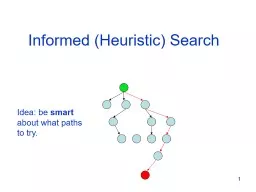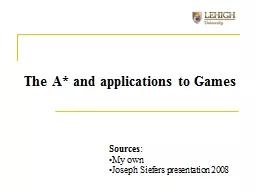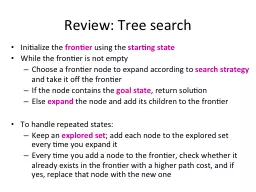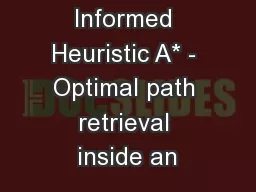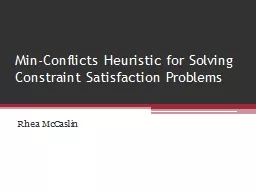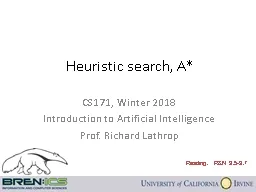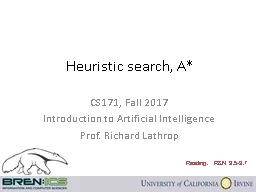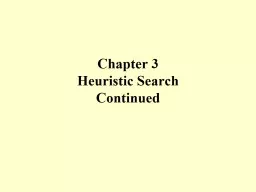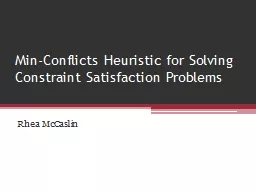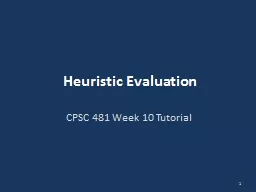PPT-1 Informed (Heuristic) Search Idea: be smart about what paths
Author : lois-ondreau | Published Date : 2019-10-31
1 Informed Heuristic Search Idea be smart about what paths to try 2 Blind Search vs Informed Search Whats the difference How do we formally specify this A node is
Presentation Embed Code
Download Presentation
Download Presentation The PPT/PDF document "1 Informed (Heuristic) Search Idea: be ..." is the property of its rightful owner. Permission is granted to download and print the materials on this website for personal, non-commercial use only, and to display it on your personal computer provided you do not modify the materials and that you retain all copyright notices contained in the materials. By downloading content from our website, you accept the terms of this agreement.
1 Informed (Heuristic) Search Idea: be smart about what paths: Transcript
Download Rules Of Document
"1 Informed (Heuristic) Search Idea: be smart about what paths"The content belongs to its owner. You may download and print it for personal use, without modification, and keep all copyright notices. By downloading, you agree to these terms.
Related Documents

